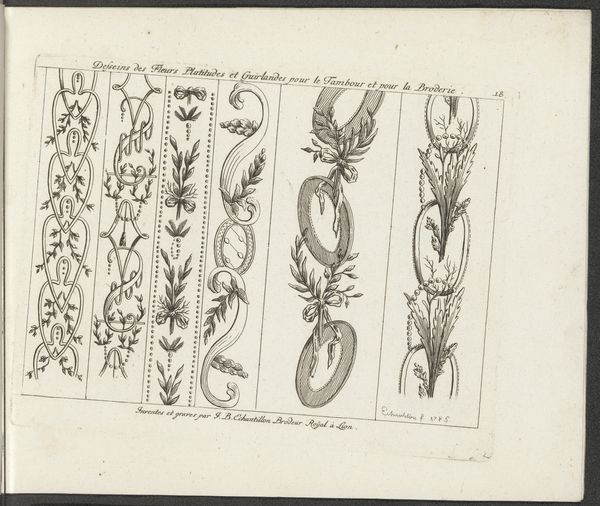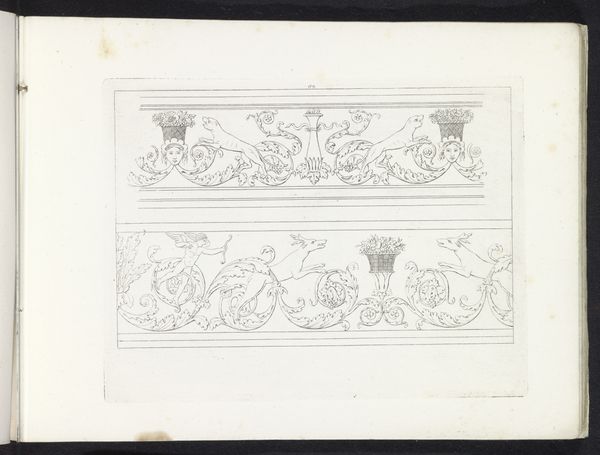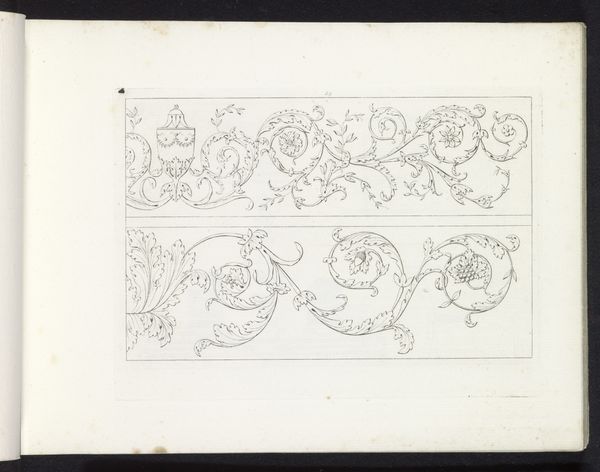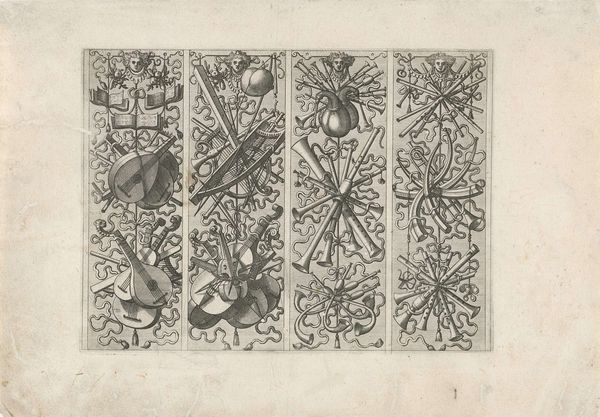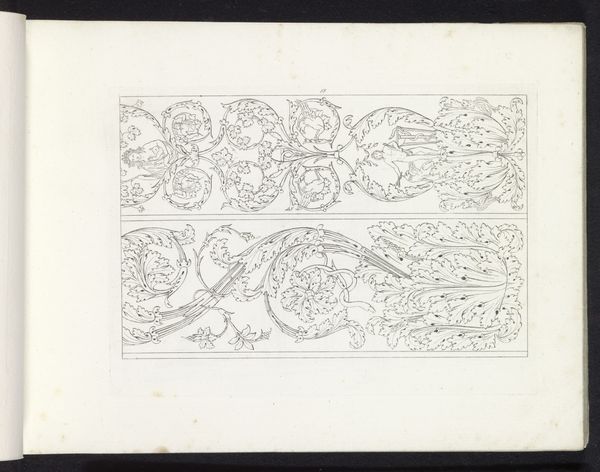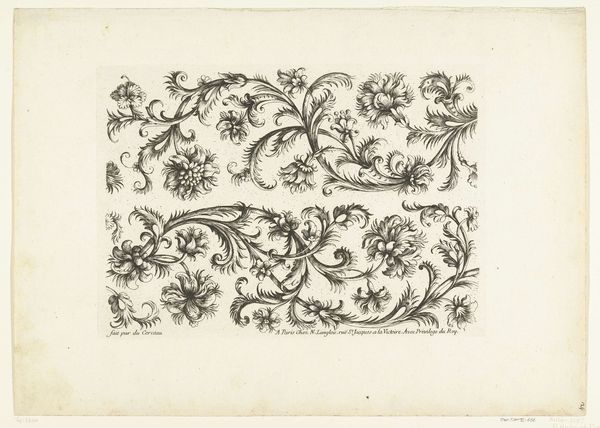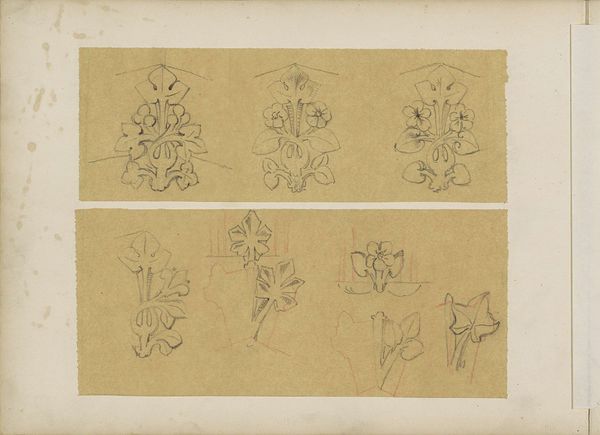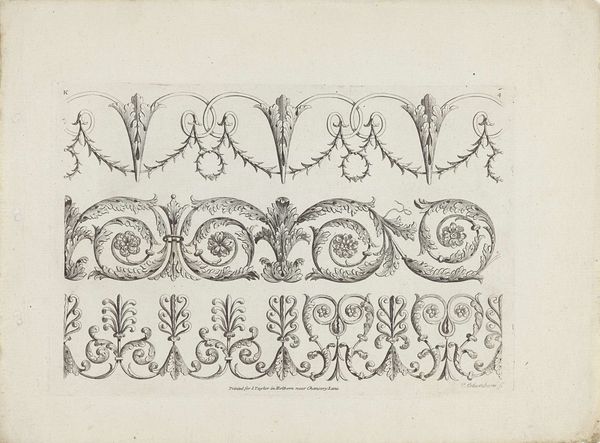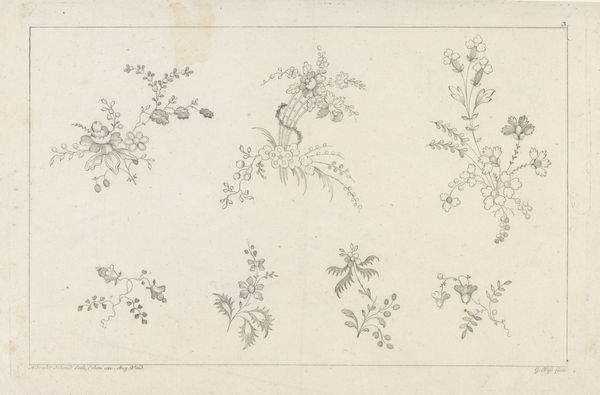
drawing, paper, ink
#
drawing
#
paper
#
ink
#
geometric
#
decorative-art
Dimensions: height 176 mm, width 227 mm
Copyright: Rijks Museum: Open Domain
Editor: Here we have "Bladmotieven en vlechtwerk," or "Leaf motifs and wainscoting," a drawing in ink on paper from 1785, by Jean Baptiste Echantillon, housed here at the Rijksmuseum. It feels almost like a page from a textbook on embroidery, very formal. What stands out to you? Curator: It strikes me as a record of visual language, the way certain motifs accumulate meaning over time. Notice how geometric forms mingle with organic leaf shapes. Consider the cultural memory embedded within these designs, reflecting a societal desire for both order and natural beauty. The geometric acts as a kind of anchor. Does this anchoring point to a specific style from this era? Editor: That’s interesting. I suppose I see the geometry as purely decorative. You see more in the symbolism? Curator: Indeed. The juxtaposition suggests a cultural dialogue. Straight lines, circles—symbols of reason and control—are intertwined with flowing, asymmetrical leaf patterns signifying nature and emotion. Can you think of a historical event of this era where we might see this contrast repeated? Editor: Perhaps something about the Enlightenment clashing with more romantic ideals? Curator: Exactly. It’s fascinating to see how abstract ideas manifest in even the most seemingly simple designs, right? The symbols can mean very different things to different people. Editor: Absolutely. I will never look at embroidery patterns the same way! Curator: Me neither. It reminds me to constantly question the intent.
Comments
No comments
Be the first to comment and join the conversation on the ultimate creative platform.
